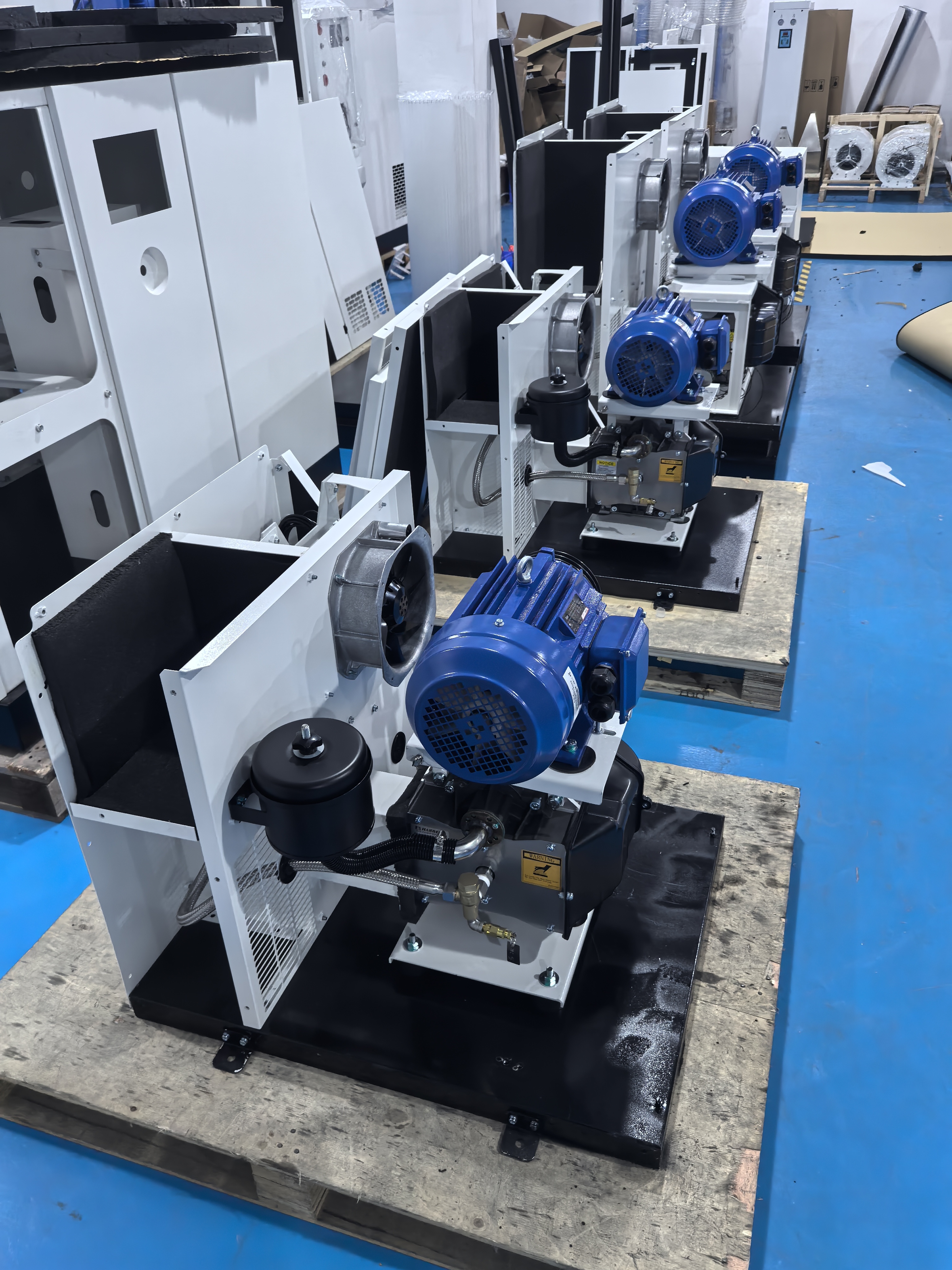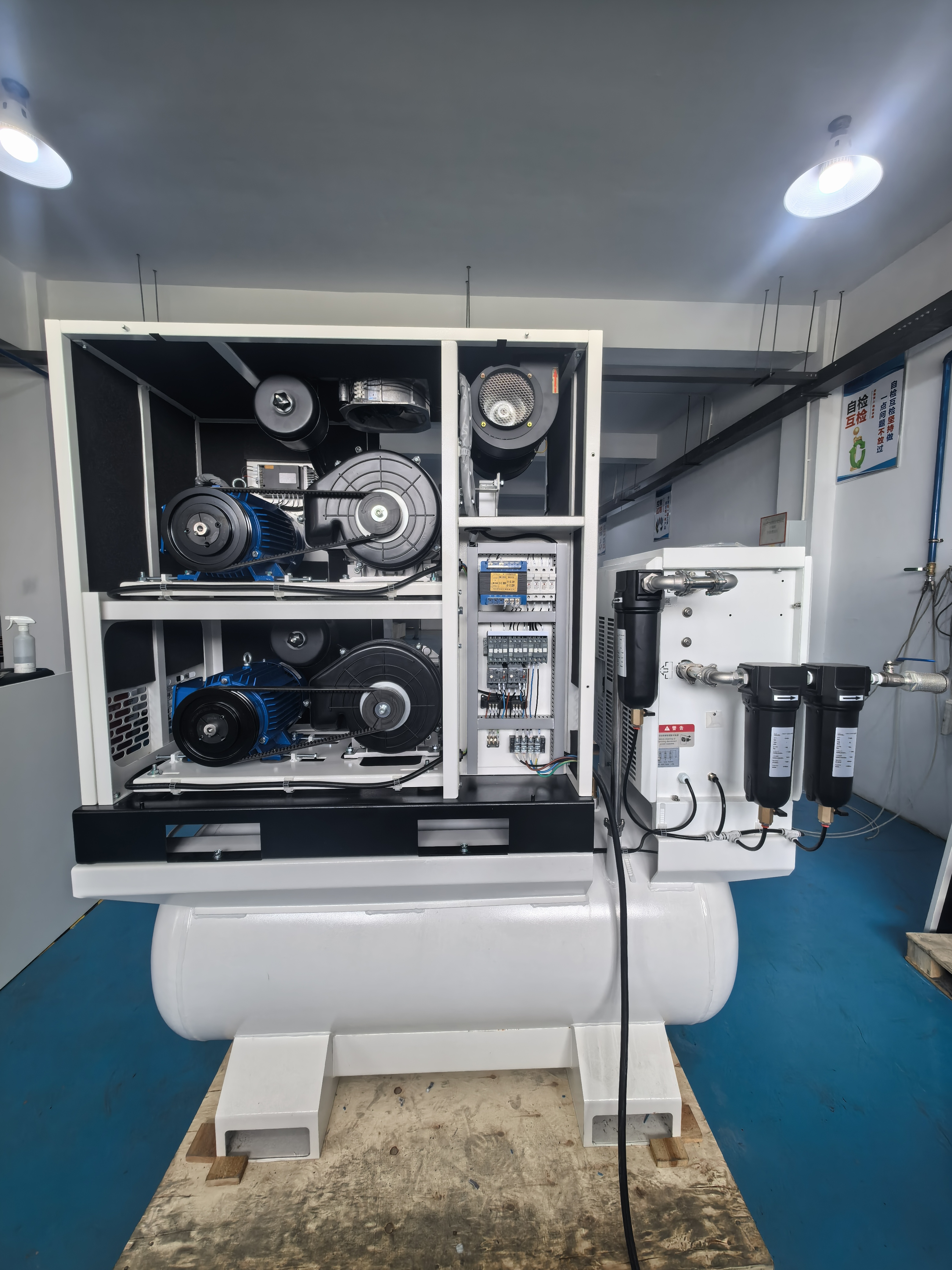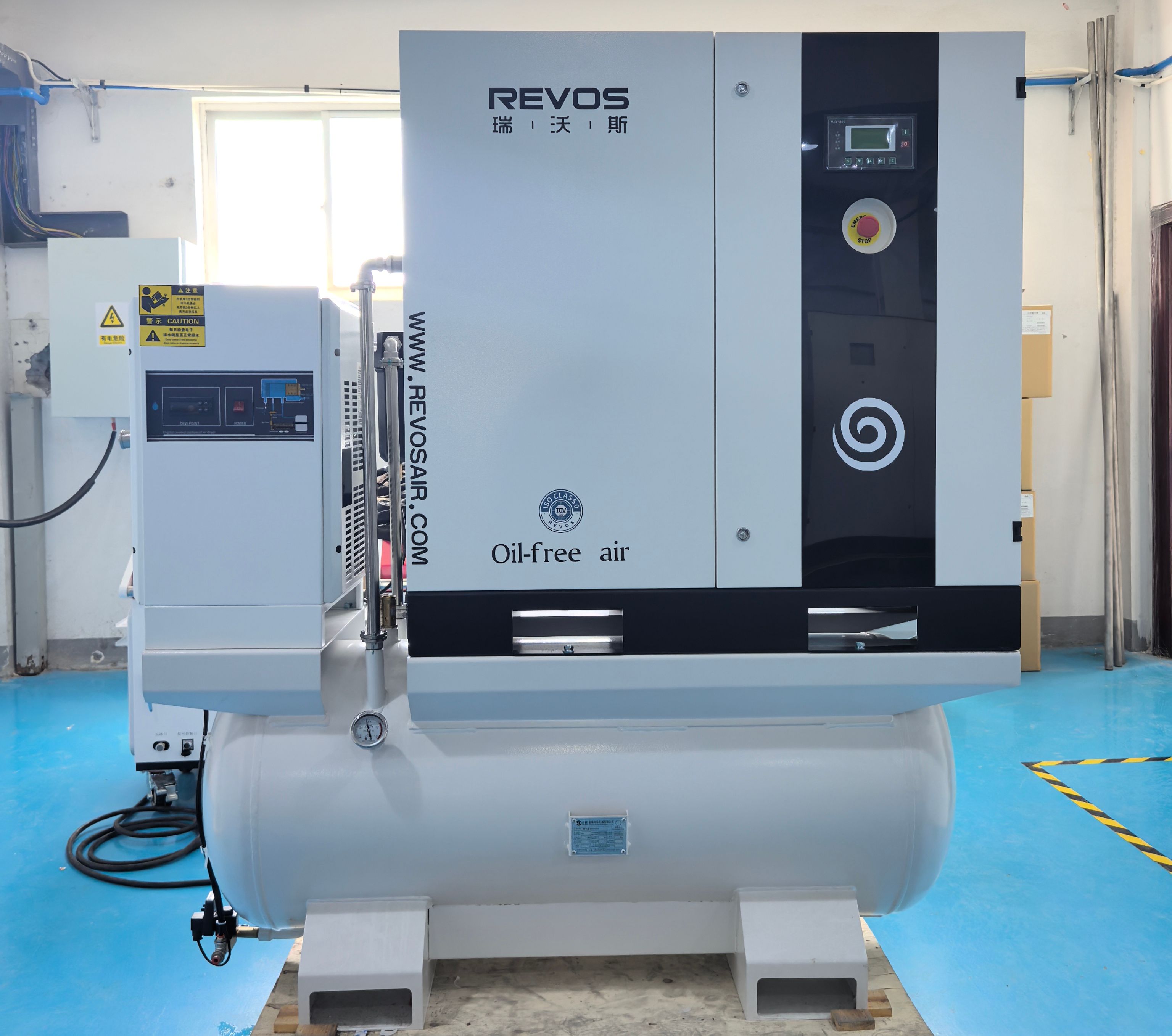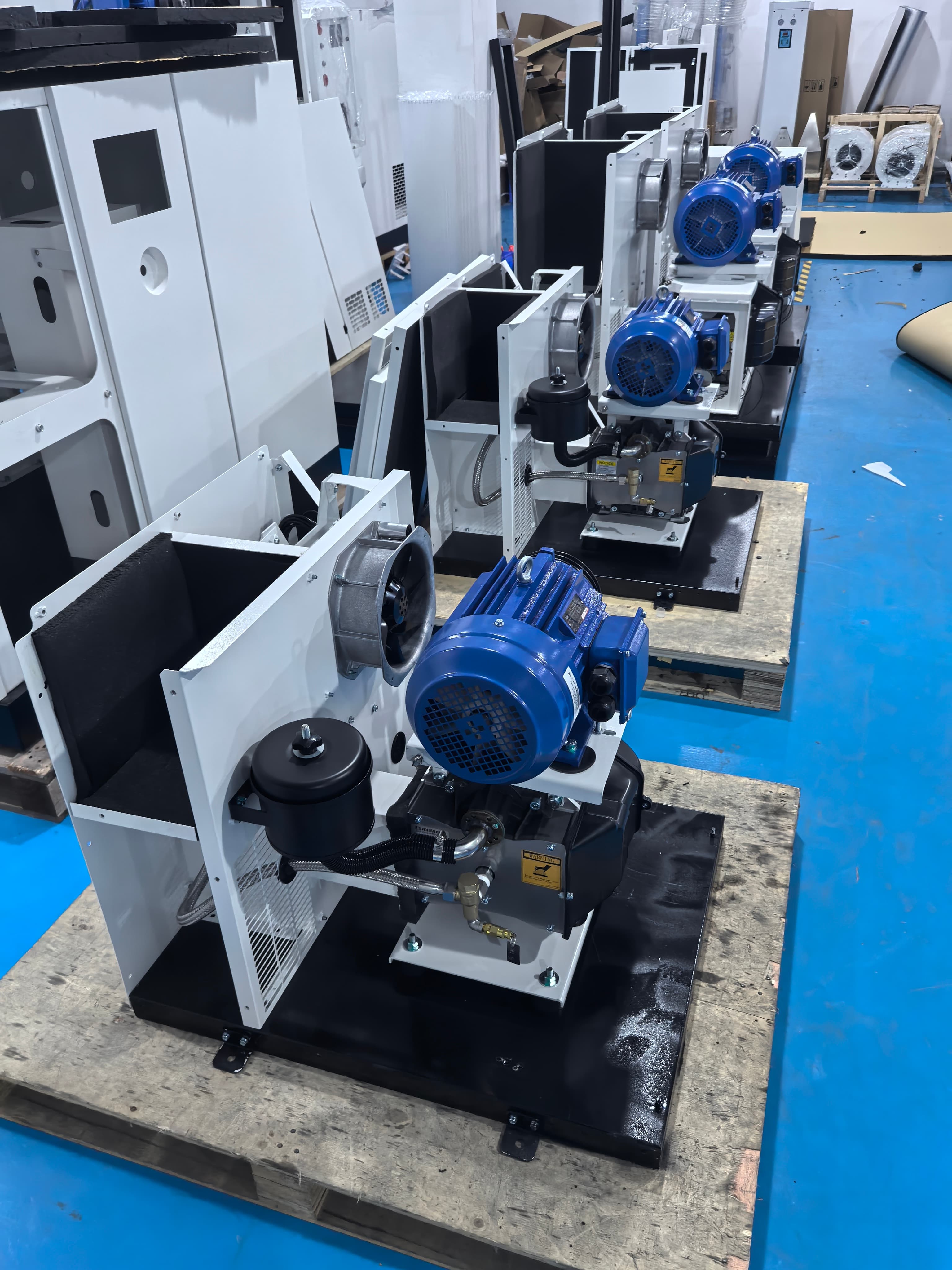As healthcare facilities navigate an era of increasing regulatory scrutiny, financial pressure, and patient safety expectations, medical compressor technology has emerged from the background to become a cornerstone of modern healthcare infrastructure. Having worked extensively with healthcare facility managers, engineers, and clinical leaders over the past decade, I've witnessed this evolution firsthand—from basic air delivery systems to sophisticated, integrated solutions that directly impact patient outcomes and operational efficiency.
The global medical air compressor market reflects this transformation, projected to reach $2.5 billion by 2033 with a compound annual growth rate (CAGR) of 9.1% (Verified Market Reports, 2025). This growth isn't merely transactional; it represents a fundamental shift in how healthcare organizations approach air quality management, energy consumption, and system reliability.
This analysis explores the technological advancements reshaping medical compressor systems, with particular focus on oil-free technologies, smart integration capabilities, and compliance standards that are rapidly becoming benchmarks for healthcare facilities worldwide. Drawing from industry best practices and real-world implementations across acute care hospitals, academic medical centers, and pharmaceutical production facilities, we'll examine how these innovations deliver measurable value through improved patient safety, enhanced operational efficiency, and reduced total cost of ownership.

The Evolution of Medical Compressor Technology in Healthcare Settings
The development trajectory of medical compressor technology directly mirrors the healthcare industry's growing emphasis on contamination control, energy efficiency, and operational reliability. What was once considered merely utility infrastructure has evolved into a critical system requiring strategic investment and careful management.
From Contamination Risks to Purity Assurance: The Oil-Free Revolution
The most significant paradigm shift in medical compressor technology has been the industry-wide transition to oil-free systems—a transformation driven by mounting clinical evidence linking air quality to patient safety outcomes. Traditional lubricated compressors, while functional for industrial applications, introduced inherent risks in medical environments where air quality directly impacts patient health.
This transition gained significant momentum in the early 2020s and accelerated dramatically as clinical evidence mounted. By 2025, ISO 8573-1 Class 0 certification had become the unequivocal standard for critical care applications—a remarkable shift from just seven years prior when approximately 42% of hospital air systems still relied on lubricated compressors with filtration systems (QAir, 2018).
The driving force behind this transition extends beyond regulatory compliance to clinical outcomes. A landmark 2024 study published in the Journal of Healthcare Engineering documented a 37% reduction in surgical site infections in facilities utilizing Class 0 certified air systems compared to traditional oil-lubricated compressors equipped with high-efficiency filtration. This clinical evidence has transformed decision-making processes, with infection control committees now playing active roles in compressor system selection.
Energy Efficiency: The Hidden Cost Driver Reshaping Investment Decisions
While patient safety remains the primary driver, the financial impact of medical air compressor systems has catapulted energy efficiency to the forefront of technology evaluation criteria. Medical air compressor systems typically account for 15-20% of a hospital's total electricity usage, representing a significant operational expense (Air Best Practices, 2025).
Variable speed drive (VSD) technology has revolutionized energy consumption patterns by enabling compressors to precisely match output to real-time demand. Industry data confirms that VSD-equipped medical compressors reduce energy consumption by 35-50% compared to fixed-speed models in facilities with variable air demand patterns (Compressed Air Challenge, 2025). When combined with heat recovery systems that capture waste heat for facility heating or domestic hot water, these advanced systems deliver payback periods as short as 2.3 years in medium-sized hospitals—a compelling financial argument for technology investment.
Key Technological Trends Reshaping Medical Compressors in 2025
The medical compressor landscape in 2025 is defined by four transformative trends that are redefining performance expectations and operational capabilities in healthcare settings. These innovations represent fundamental shifts in how medical air systems are designed, monitored, and maintained—moving from passive equipment to active contributors to healthcare facility performance.
IoT Integration and Predictive Maintenance: The Intelligence Revolution
Internet of Things (IoT) technology has transformed medical compressor systems from reactive equipment to intelligent assets capable of self-monitoring and predictive maintenance. Leading manufacturers now offer systems with embedded sensors that continuously track performance metrics, including air pressure and flow rates, temperature differentials across compression stages, vibration patterns, energy consumption, and filter status.
This real-time data transmits to cloud-based platforms where machine learning algorithms identify performance degradation patterns and predict potential failures before they occur. A July 2025 case study from TurboAir Tech documented a 62% reduction in unplanned downtime for a 350-bed hospital after implementing an IoT-enabled predictive maintenance system. The facility also reported 28% lower maintenance costs and 17% better overall system efficiency—translating to approximately $147,000 in annual savings.
Miniaturization and Decentralization: Redefining System Architecture

Another major trend transforming healthcare facilities is the move toward decentralized compressed air systems, particularly valuable in retrofitted healthcare facilities and specialized treatment areas. Compressor design advances have enabled compact, high-performance units that can be installed closer to the point of use, reducing pressure drops and energy waste from long piping runs.
Pharmaceutical manufacturers were early adopters of this approach, implementing dedicated mini-compressor systems for isolated production suites handling sensitive compounds. These decentralized systems provide enhanced contamination control through isolation, improved pressure stability for precision processes, reduced risk of system-wide contamination, easier maintenance without disrupting entire production lines, and scalable capacity that expands incrementally.
A leading contract pharmaceutical manufacturer reported 33% lower validation costs for new production lines using decentralized Class 0 certified air systems compared to traditional centralized systems (Pharma Manufacturing, 2025)—a significant financial benefit in an industry where validation expenses can represent 20-30% of total project costs.
Smart Energy Management Systems: Optimizing Resource Utilization
The convergence of IoT technology with advanced energy management has created intelligent compressor systems that optimize energy usage based on real-time facility demand. These systems integrate with hospital building management systems (BMS) to coordinate air production with actual need across different departments and procedures.
For example, a tertiary care facility in Chicago implemented a smart energy management system that reduced peak demand charges by 41% through strategic cycling of compressors during high-demand periods while maintaining adequate reserve capacity for critical care areas (Healthcare Facilities Today, 2025). The system also used weather forecasting data to anticipate increased demand for respiratory therapies during winter months, ensuring optimal performance during peak usage periods.
Material Science Innovations: Enhancing Performance and Durability
Materials technology advancements have simultaneously improved both performance and durability of medical compressors. New composite materials for compressor rotors and cylinders have reduced weight while increasing heat resistance and wear characteristics. Ceramic coatings on compression components have extended maintenance intervals by up to 200% in some applications.
Most significantly, nanotechnology-based filtration systems have improved air quality while reducing pressure drop across filtration stages. These advanced filters remove particles as small as 0.01 microns with over 99.999% efficiency, providing an additional protection layer for critical applications like neonatal intensive care and sterile compounding pharmacies.
Medical Grade Air Compressors Case Studies: Real-World Applications and Outcomes
The following case studies illustrate how healthcare organizations across different sectors have leveraged advanced compressor technologies to improve patient safety, enhance operational efficiency, and achieve regulatory compliance. These real-world examples demonstrate the tangible benefits of strategic investment in modern medical compressor systems.
Case Study 1: Academic Medical Center's Transition to Oil-Free Technology
Facility Profile: 850-bed tertiary care academic medical center with Level I trauma center, neonatal intensive care unit (NICU), and multiple surgical suites including robotic surgery capabilities.
Challenge: The facility's aging centralized lubricated compressor system required frequent maintenance and could not consistently meet increasingly stringent air quality requirements for their expanding robotic surgery program.
Solution: After comprehensive evaluation, the facility replaced their air compression system with three Class O certified oil-free scroll compressors configured with redundant capacity and integrated IoT monitoring. The new system included three 75HP oil-free scroll compressors with VSD technology, advanced air treatment train with heatless desiccant dryers, real-time monitoring system with predictive maintenance capabilities, and heat recovery system providing 1.2 million BTUs per hour for domestic hot water.

Implementation Results:
- Air Quality Improvement: Consistent ISO 8573-1 Class 0 certification with particle counts below detection limits
- Energy Savings: 43% reduction in annual energy consumption for air compression (approximately $89,000 annually)
- Reliability: 99.98% system uptime with zero unplanned outages in first 18 months
- Maintenance Reduction: 67% decrease in maintenance hours and 52% reduction in maintenance costs
- ROI: Projected payback period of 3.7 years based on energy and maintenance savings alone
Key Learning: "The transition to oil-free technology wasn't just about meeting current standards—it was about future-proofing our air system for emerging technologies and more stringent regulatory requirements we anticipate over the next decade," noted the facility's director of engineering. "The heat recovery alone has made a significant impact on our domestic hot water costs, and the predictive maintenance capabilities have virtually eliminated emergency service calls."
Case Study 2: Pharmaceutical Manufacturer's Decentralized Compression Strategy
Company Profile: Mid-sized pharmaceutical manufacturer specializing in sterile injectables with approximately 200,000 square feet of production space across multiple ISO 7 and ISO 8 cleanrooms.
Challenge: The existing centralized compressed air system had increasing pressure fluctuations affecting filling accuracy, and qualification costs for system changes were becoming prohibitive.
Solution: Implementation of a decentralized compression strategy with dedicated Class O certified oil-free compressors for each production suite. This approach included six dedicated 20HP oil-free scroll compressors (one for each production line), point-of-use air treatment systems customized for specific processes, central monitoring system providing visibility into each decentralized unit, and modular design allowing for quick changeover during product transitions.
Implementation Results:
- Process Stability: 94% reduction in pressure fluctuations during critical filling operations
- Validation Costs: 62% reduction in qualification expenses for system modifications
- Energy Efficiency: 28% reduction in overall compressed air energy consumption
- Production Flexibility: Changeover time between products reduced by 47%
- Contamination Control: Zero product contamination incidents related to compressed air following implementation
Key Learning: "The decentralized approach gave us unprecedented control over our compressed air quality while simultaneously reducing our validation burden and improving process stability," reported the pharmaceutical operations manager. "We've been able to accelerate product development timelines while maintaining the highest quality standards, which has been a competitive advantage in our market."
Case Study 3: Community Hospital's IoT Integration for Predictive Maintenance
Facility Profile: 185-bed community hospital with general medical/surgical services, emergency department, and limited critical care capabilities.
Challenge: Limited maintenance staff and aging equipment had resulted in reactive maintenance practices and occasional service disruptions.
Solution: Retrofitting existing oil-free compressors with IoT-enabled monitoring sensors and implementing a cloud-based predictive maintenance platform. The upgrade included vibration, temperature, and pressure sensors on all compressor components, energy consumption monitoring with automated efficiency reports, cloud-based analytics platform with machine learning algorithms, mobile alert system for maintenance personnel, and integration with the hospital's CMMS (Computerized Maintenance Management System).
Implementation Results:
- Downtime Reduction: 76% decrease in unplanned compressor downtime
- Maintenance Efficiency: 34% reduction in maintenance labor hours for the compressed air system
- Energy Savings: 18% improvement in compressor energy efficiency
- Budget Planning: More accurate maintenance budgeting with 92% prediction accuracy for component failures
- Staff Productivity: Maintenance staff redirected to proactive tasks rather than reactive troubleshooting
Key Learning: "The IoT upgrade transformed our approach to compressor maintenance from guesswork to science," observed the hospital's maintenance director. "We now address issues before they affect operations, and our maintenance planning has become significantly more efficient. For a small facility with limited staff, this technology has been a game-changer in how we manage our resources."
Critical Considerations for Healthcare Facilities Evaluating Medical Compressors
Selecting the right medical compressor technology requires careful consideration beyond basic air delivery requirements. Healthcare facilities must balance patient safety, regulatory compliance, operational efficiency, and long-term cost management. Based on industry best practices and the case studies presented, the following key evaluation criteria should guide this decision-making process.
Air Quality Requirements and Certification Standards
Any medical compressor evaluation should start with clearly defined air quality requirements aligned with intended use. Facilities must differentiate between critical care, general medical, and pharmaceutical applications, each with their own standards and certification requirements. ISO 8573-1 for air purity, HTM 02-01 for UK healthcare facilities, and NFPA 99 for U.S. facilities represent the primary standards, with Class O certification becoming the de facto requirement for critical applications.
Facilities should develop a comprehensive risk assessment matrix evaluating consequences of air contamination for each application, considering patient safety, regulatory compliance, product quality (for pharmaceutical applications), and operational continuity. This assessment forms the foundation for determining appropriate certification levels and monitoring protocols.
Energy Efficiency and Total Cost of Ownership
While initial purchase price naturally influences decision-making, healthcare facilities should focus on total cost of ownership (TCO) when evaluating medical compressor systems. A detailed TCO analysis should cover at least 10 years and include projected energy cost increases, maintenance cost escalation, and potential regulatory compliance upgrades. Facilities that ignore these long-term factors often underestimate true ownership costs by 30-40% (Compressed Air Best Practices, 2025).
Key TCO factors include energy consumption based on load profile and efficiency rating, maintenance requirements and associated costs, lifecycle expectancy under projected operating conditions, upgrade path for future technology integration, and flexibility for future facility modifications.
Reliability and Redundancy Planning
Medical air systems are classified as life-safety systems in healthcare facilities, making reliability a paramount consideration. The Joint Commission and other accrediting bodies have focused increasing attention on medical air system reliability in recent years, with specific requirements for redundancy and backup capabilities in critical care areas.
Facilities should evaluate redundancy requirements (N+1 or 100% redundancy based on application criticality), identify single points of failure and mitigation strategies, assess backup capabilities including emergency power integration and manual operation options, and verify manufacturer support availability and response times, as well as local inventory and lead times for critical components.
Scalability and Future Expansion
Healthcare facilities are dynamic environments with evolving needs, making scalability a critical evaluation factor. Compressor systems should be assessed based on modular design capabilities for incremental capacity additions, footprint efficiency and expansion capability, technology adaptability for future IoT integration and smart monitoring, regulatory flexibility to meet anticipated future air quality standards, and compatibility with evolving facility energy systems.
A phased implementation approach often provides the best balance between immediate needs and future flexibility, allowing facilities to make initial investments based on current requirements while establishing a clear expansion roadmap as needs evolve.
Implementation Best Practices for Healthcare Facilities
Successfully implementing advanced medical compressor technology requires careful planning, execution, and ongoing management. Based on analysis of successful implementations across healthcare settings, the following structured approach maximizes desired outcomes while minimizing operational disruptions.
Conducting a Comprehensive Needs Assessment
A thorough needs assessment considering current requirements and future projections forms the foundation of successful compressor implementation. This assessment should include detailed measurement of current usage patterns across all departments and procedures, identification of maximum demand periods and contingency scenarios, determination of pressure specifications for different applications, definition of air purity requirements based on application risk assessment, and estimation of future demand based on planned facility expansions or service additions.
This assessment should run for at least three months to capture seasonal variations and periodic high-demand events. Advanced data logging equipment provides valuable insights into usage patterns that might otherwise go undetected, ensuring that the selected system matches actual facility needs rather than theoretical requirements.
Developing a Detailed Implementation Plan
With requirements clearly defined, facilities should develop a comprehensive implementation plan addressing technology selection based on needs assessment, installation schedule with contingency planning, phasing strategy for transitioning from existing systems to new equipment, validation requirements and testing protocols to ensure compliance with standards, staff training and education plan for operators and maintenance personnel, and commissioning process for verification of system performance.
Special attention should be paid to developing a transition strategy that maintains medical air service continuity during implementation. This often involves temporary rental equipment or phased component replacement to prevent disruptions to patient care—a critical consideration that requires close coordination between engineering, clinical, and facilities teams.
Establishing Ongoing Monitoring and Maintenance Protocols
Implementing advanced medical compressor technology represents the beginning, not the end, of the journey toward optimal performance. Facilities need robust protocols for performance monitoring through regular review of key performance indicators, preventive maintenance based on manufacturer recommendations and operational experience, calibration schedule for regular verification of monitoring equipment accuracy, quality testing with periodic air quality sampling and analysis, and performance optimization through continuous improvement initiatives based on operational data.
The most successful facilities have implemented cross-functional teams including engineering, clinical, and quality assurance representatives who review performance data monthly and identify optimization opportunities. This collaborative approach ensures the compressor system continues meeting the healthcare facility's evolving needs while maintaining compliance with changing regulatory requirements.
Training and Knowledge Transfer
Comprehensive staff training is often overlooked but essential for successful implementation. Facilities must ensure that operators and maintenance personnel have the knowledge and skills to operate and maintain new systems effectively. Training programs should address system operation (both basic and advanced procedures), monitoring interpretation to understand performance data and alerts, troubleshooting methodology for systematic identification and resolution of issues, preventive maintenance procedures for proper execution of scheduled activities, and safety protocols for safe operation and maintenance.
Hands-on training with actual equipment is essential, supplemented with manufacturer-provided resources and ongoing educational opportunities. Facilities investing in comprehensive training programs typically see 35-40% higher equipment uptime and 25% lower maintenance costs than those providing minimal training (Healthcare Technology Management, 2025).
Conclusion: The Future of Medical Compressor Technology in Healthcare
As we look beyond 2025, medical compressor technology will continue its evolution toward greater intelligence, efficiency, and integration with broader healthcare facility systems. The convergence of IoT, artificial intelligence, and advanced materials science promises to deliver even greater benefits in patient safety, operational efficiency, and cost management.
Healthcare facilities that view medical compressors as strategic assets rather than mere utilities will gain competitive advantages in an increasingly challenging healthcare environment. The case studies and best practices presented in this analysis demonstrate that thoughtful investment in medical compressor technology delivers measurable returns in multiple dimensions—from improved clinical outcomes to enhanced financial performance.
For healthcare facility managers and engineers evaluating medical compressor systems, the path forward requires balancing current needs with future-proofing considerations, prioritizing patient safety while optimizing operational efficiency, and leveraging data-driven insights to make informed decisions. By following the structured approach outlined in this analysis, healthcare organizations can navigate the evolving landscape of medical compressor technology with confidence, ensuring that their air systems support the highest standards of patient care while delivering maximum value to the
